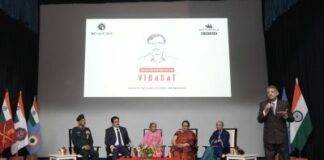All commercial vessels operating on the high seas are bound within the confines of mandatory International operational code. Every ship is issued a Port Clearance Certificate, by the Harbor Master of the port from where it commences its journey, giving date and time in addition giving details of its cargo etc. plus specifying port of destination.
For all practical purposes 12 nautical miles of sea are an exclusive dominion of the littoral nations. Any sea craft operating within this sacrosanct territory is liable for legal action for any unauthorized entry. There is an only exception for those vessels which enter on account of “distress”, subject to furnishing proof of its credentials.
After registration of case the rogue vessel as well as the crew taken in police custody. Next they were required to be produced before the magistrate at Port Blair, within 24 hrs., excluding the journey period.
This transportation depended on availability and prevailing weather conditions, many times they were shipped in their own seized boat. Further all the crew members could not be produced in one batch, since some had to remain on board the ship to oversee its essential operations, which the police was incompetent to handle.
Thereafter came job of preparing inventory of personnel effects of each crew, another one was for details of equipment and material available on the ship at time of seizure. This detailed cataloging consumed a considerable period.
Most authentic evidence available on board the ship was in form of three crucial log books essentially maintained on all ships.
These log books were maintained and recorded by the ship’s Captain, Radio officer and the Chief engineer. Mandatory vital recordings indicated the tell tale signs of ships operational journey.Which were verified by ascertaining the seaworthiness of ship by a qualified marine engineer plus it was checked whether the weather recorded synchronized with available authenticated reports and the distress signals dispatched, if any.
In those days obtaining weather reports, was through official channels, a lengthy time consuming process.Eastern regional met. office situated at Calcutta took at least six months to furnish report about the prevailing weather conditions on the desired date and place. Likewise the trial court reprimanded police for not filing the charge sheet within the stipulated period.
Under Indian evidence act all technical reports were to be furnished by a certified expert. The naval meteorological officer qualified under this category.
On account of my personal equation with naval authorities persuaded them to furnish these weather reports as a time saving measure.
They agreed on one specific condition that their officer would not be summoned by the court for any appearance.
It was a general observation that defense personnel shied from court appearances, in contrast to police personnel who had to daily deal with various types of court summons, showing a marked difference in nature of working conditions. Otherwise navy was not under any obligation to provide us with these mandatory weather reports.
We used to wonder how navy compiled the detailed reports concerning the weather of entire Bay of Bengal. On becoming extremely friendly with naval weathermen one day got a chance to visit their meteorological office.To my utter dismay discovered they daily received these reports from Moscow, USSR.
In those days we lacked sophisticated satellites which could provide us vital weather data of Bay of Bengal or Arabian sea.
Nearly two dozen Police Radio Stations of Andaman and Nicobar police stationed across the length and breadth of these isolated islands, officially functioned as rudimentary weather stations.
Daily these stations registered the temperature, humidity, rainfall, atmospheric pressure, wind speed and direction.
This data was transmitted to Eastern regional meteorological center at Calcutta, was not sure how they adjusted these recordings within the framework of their detailed compilations. For this extra work these personal personnel received a special allowance.
Interestingly another revolutionary development was taking a practical shape to ease the movement of Ocean liners was satellite navigation system (SATNAV).
This was inaugurated way back in 1978, it developed rapidly to engulf entire shipping sector across the globe.
Such a system required an integrated combination of 32 satellites functioning across different orbits and planes.
The weather reports officially compiled in those days by Indian Meteorological Department (IMD), which lacked depth, substance and authenticity.
Since then during past few decades we have traveled a long way in making weather forecasting highly accurate and reliable, thanks to an achievement of unprecedented sophistication in the field of satellite technology.
(stray observations from Andaman and Nicobar archipelago, 1982-85.)
Note : Author of this content retired deputy commisioner of Delhi Police















